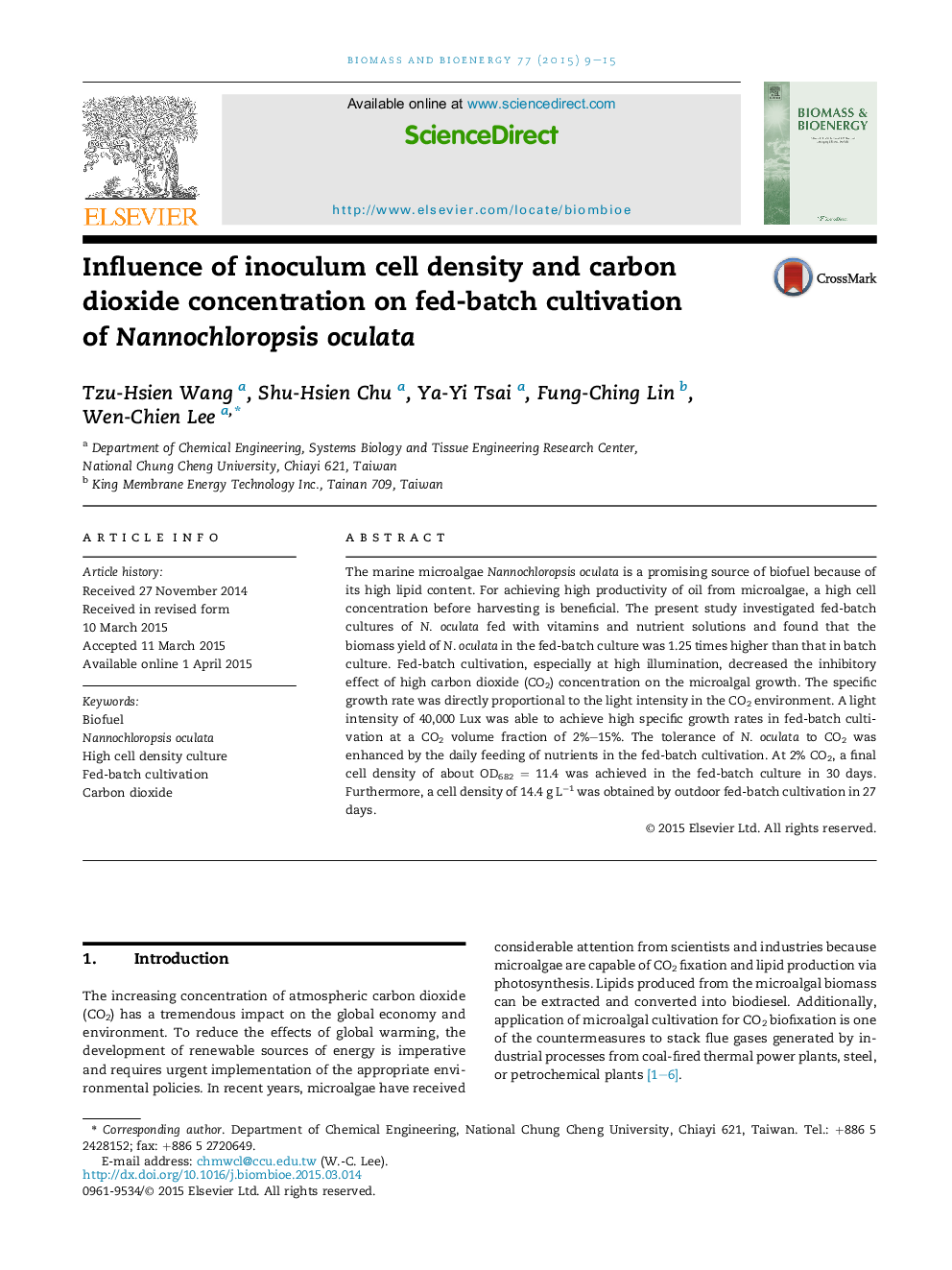| Article ID | Journal | Published Year | Pages | File Type |
|---|---|---|---|---|
| 676764 | Biomass and Bioenergy | 2015 | 7 Pages |
•Nannochloropsis oculata could be cultivated to high cell density by fed-batch.•Growth rate of microalage in fed-batch culture was higher than in batch culture.•Feb-batch could reduce the inhibition effect of high carbon dioxide concentration.•Reduction of carbon dioxide inhibition was more significant at high illumination.
The marine microalgae Nannochloropsis oculata is a promising source of biofuel because of its high lipid content. For achieving high productivity of oil from microalgae, a high cell concentration before harvesting is beneficial. The present study investigated fed-batch cultures of N. oculata fed with vitamins and nutrient solutions and found that the biomass yield of N. oculata in the fed-batch culture was 1.25 times higher than that in batch culture. Fed-batch cultivation, especially at high illumination, decreased the inhibitory effect of high carbon dioxide (CO2) concentration on the microalgal growth. The specific growth rate was directly proportional to the light intensity in the CO2 environment. A light intensity of 40,000 Lux was able to achieve high specific growth rates in fed-batch cultivation at a CO2 volume fraction of 2%–15%. The tolerance of N. oculata to CO2 was enhanced by the daily feeding of nutrients in the fed-batch cultivation. At 2% CO2, a final cell density of about OD682 = 11.4 was achieved in the fed-batch culture in 30 days. Furthermore, a cell density of 14.4 g L−1 was obtained by outdoor fed-batch cultivation in 27 days.
